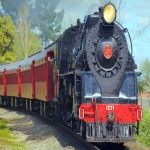
Knee pain is common among all populations. Dr. Dan Lorenz, the owner and Director of Physical Therapy for Specialists in Sports and Orthopedic Rehabilitation (SSOR) is our guest blogger this week and he explains why we have knee pain and how to treat it.
Do your knees ache after sitting for a long time, like after watching a movie or sitting in the car/on an airplane? Do your knees hurt while going downstairs? Do you have an ache around your patella (“kneecap”) that is poorly localized? Does it hurt the front of your knees when you squat? Knee pain is easily one of the most common things that people seek treatment for, either from their physician or in physical therapy. General knee pain, also known as patellofemoral pain syndrome (PFPS), affects people of all ages and abilities. Young athletes can get PFPS from sports activities, while a middle-aged, more sedentary person might get PFPS from age-related “wear and tear.” Regardless of age, PFPS can be treated with a comprehensive rehabilitation plan. Historically, rehabilitation has focused on quadriceps strengthening as quadriceps weakness has been linked to PFPS, but there is mounting evidence that a rehabilitation plan should include exercises to strengthen the hips. That may not make much sense, but a train and train track may help explain this better.

Think of your hips and pelvis as the “train station.” The train station is the hub – all the action starts and ends there. Well, your femur (“thigh bone”) attaches to your pelvis and the tibia (“shin bone”) attaches to the femur at the knee. These two bones, along with your ankle, constitute the “train track” and they come from the pelvis, the “train station”. The patella is the “train.” So how does this all fit in with knee pain and your exercise plan? The hip muscles in your pelvis, like the gluteals and hip external rotators, control where the “track” goes when you walk, squat, or take stairs. The track moves under the train, so if the track muscles in the hips are strong, the train has a good track to run in. With poor strength of the “train station,” you feel pain in part because the “wheels on the train are not on the track.” In summary, to help your knee pain, you have to strengthen the muscles in the station because they control the track and by doing that, they allow the train to run correctly!
A comprehensive rehabilitation plan for your knee pain should involve stretching, strengthening of the quadriceps and hips, and cold modalities to help with pain. Other interventions like orthotics and taping techniques may also be used to augment treatment for PFPS.



